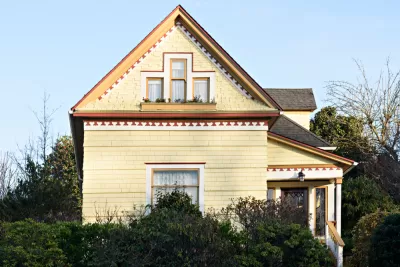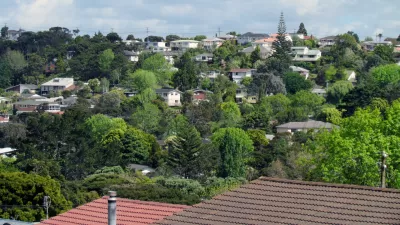In Seattle, most (88 percent) of the city's new housing is being developed in a few small, already dense areas around the city. Most of the city is reserved for single-family housing.

Mike Rosenberg takes a deep dive into zoning in the city of Seattle to examine how it has contributed to the city's skyrocketing residential real estate market. The questioned examined in the article is, "how much of Seattle’s housing is traditional, suburban-style single-family homes, and how that has affected our growth and housing prices."
Rosenberg's analysis finds that with 69 percent o fits residential lots devoted to single-family housing, Seattle's use of residential land is akin to much smaller cities, "[b]ut compared to other peer cities with expensive housing, Seattle generally devotes a lot more of its housing to single-family homes…"
After explaining the residential make-up of the city in other terms, Rosenberg digs into the concept of zoning, which is described as the "whole game" when it comes to housing. According to Rosenberg, because most of the city is limited to single-family zoning, and new buildings have only been added in already dense area, most of the city is not growing in the sense of the size and total of its buildings. That reality has implications for both the homeownership and rental markets, which Rosenberg examines in more detail in the article.
For more on potential changes to the land use scheme currently controlling the market in Seatte, see analysis from March of a proposal to expand the more dense "urban villages" where most of Seattle's growth is located as part of the city's Housing Affordability and Livability Agenda.
FULL STORY: Rapidly growing Seattle constrains new housing through widespread single-family zoning

Alabama: Trump Terminates Settlements for Black Communities Harmed By Raw Sewage
Trump deemed the landmark civil rights agreement “illegal DEI and environmental justice policy.”

Study: Maui’s Plan to Convert Vacation Rentals to Long-Term Housing Could Cause Nearly $1 Billion Economic Loss
The plan would reduce visitor accommodation by 25% resulting in 1,900 jobs lost.

Planetizen Federal Action Tracker
A weekly monitor of how Trump’s orders and actions are impacting planners and planning in America.

Waymo Gets Permission to Map SF’s Market Street
If allowed to operate on the traffic-restricted street, Waymo’s autonomous taxis would have a leg up over ride-hailing competitors — and counter the city’s efforts to grow bike and pedestrian on the thoroughfare.

Parklet Symposium Highlights the Success of Shared Spaces
Parklets got a boost during the Covid-19 pandemic, when the concept was translated to outdoor dining programs that offered restaurants a lifeline during the shutdown.

Federal Homelessness Agency Places Entire Staff on Leave
The U.S. Interagency Council on Homelessness is the only federal agency dedicated to preventing and ending homelessness.
Urban Design for Planners 1: Software Tools
This six-course series explores essential urban design concepts using open source software and equips planners with the tools they need to participate fully in the urban design process.
Planning for Universal Design
Learn the tools for implementing Universal Design in planning regulations.
Caltrans
Smith Gee Studio
Institute for Housing and Urban Development Studies (IHS)
City of Grandview
Harvard GSD Executive Education
Toledo-Lucas County Plan Commissions
Salt Lake City
NYU Wagner Graduate School of Public Service




























